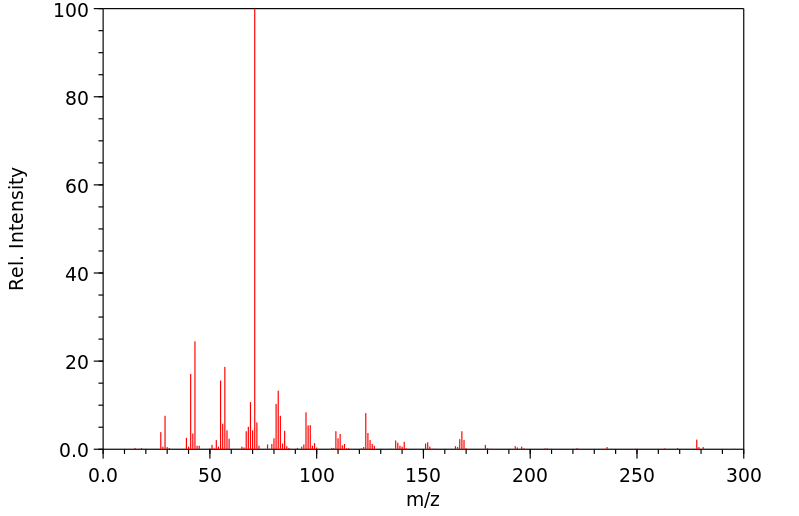毒理性
异植物醇的急性经口和经皮毒性较低:经口哺乳动物LD50高于5000毫克/千克体重,大多数值大于8000毫克/千克体重。急性经皮LD50在兔子上方5000毫克/千克体重。小鼠的一个腹腔LD50为169毫克/千克体重。在啮齿类动物中,8小时吸入测试显示非气溶胶异植物醇富集气氛没有影响(基于蒸汽压的NOEC约为0.3毫克/立方米)。根据动物研究,异植物醇对皮肤有刺激性,但10%的凡士林溶液对人类志愿者没有刺激性。异植物醇对眼睛有轻微刺激性。在兔子上,眼睛产生了短暂的刺激性反应,这些反应在8天内全部得到解决。在两项致敏试验中,反应被认为是刺激性而非致敏性,用人志愿者进行的10%异植物醇的最大化测试为阴性。28天亚慢性经口的NOEL为250毫克/千克体重/天,仅在LOAEL1000毫克/千克体重/天时观察到轻微且可逆的影响(包括肾脏重量变化)。根据一代研究的组织病理学数据,雌性平均暴露64天,雄性98天,亲本全身毒性的NOEL和NOAEL低于250毫克/千克体重/天。在两项细菌试验中,异植物醇没有表现出致突变性,而一项细菌试验主要是阴性,但有少数模糊的结果。在体内微核试验中没有看到断裂作用。因此,认为异植物醇不具有致突变性。没有适当的致癌性数据。在一项一代生殖毒性研究中,250毫克/千克体重/天是基于肾脏影响(肾小管扩张;肾矿化)的亲本毒性的LOAEL。500毫克/千克体重/天是基于稍微增加的平均交配前时间、降低的生育指数和受孕率的母体生殖效应的NOAEL。在低剂量和中剂量(对照组2%,250毫克/千克体重/天7%,500毫克/千克体重/天8%)观察到产后损失,在1000毫克/千克体重/天时观察到增加了39%,在此剂量下母亲也出现了临床体征。基于临床体征和哺乳期间体重下降,得出幼崽发育毒性的NOAEL为500毫克/千克体重/天。总之,异植物醇的整体哺乳动物毒性被认为是较低的,但基于动物数据,存在刺激性的潜在风险。
Isophytol has a low acute oral and dermal toxicity: oral mammalian LD50 above 5000 mg/kg bw, with most values greater than 8000 mg/kg bw. The acute dermal LD50 is above 5000 mg/kg bw in rabbits. One intraperitoneal LD50 in mouse is 169 mg/kg bw. Inhalative tests over 8 hours in rodents show no effect of a nonaerosol isophytol-enriched atmosphere (NOEC about 0.3 mg/cu m based on vapor pressure). Isophytol is irritating to the skin, based on animal studies, but a 10% solution in petrolatum was not irritating to human volunteers. Isophytol is a slight eye irritant. In rabbit transient irritant reactions of the eyes were produced, which all resolved within 8 days. In two sensitization tests the reactions were judged to be of an irritant rather than a sensitizing nature, a maximization test with 10% isophytol in human volunteers was negative. The 28-day subchronic oral NOEL is 250 mg/kg bw/d, with only minor and reversible effects (including kidney weight changes) at the LOAEL of 1000 mg/kg bw/d. Based on histopathological data from a one-generation study with an average exposure of 64 days for females and of 98 days for males, the NOEL and NOAEL for parental systemic toxicity was below 250 mg/kg bw/d. Isophytol was not mutagenic in two bacterial tests, whereas one bacterial test was predominantly negative with a few ambiguous results. In an in vivo micronucleus test no clastogenic effects were seen. Thus isophytol is considered to be not mutagenic. There are no proper carcinogenicity data. In a one-generation reproductive toxicity study, 250 mg/kg bw/d was the LOAEL for parental toxicity based on effects in kidney (dilated renal tubules; renal mineralization). 500 mg/kg bw/d was the NOAEL for maternal reproductive effects based on a slightly increased mean pre-coital time, a decreased fertility index and conception rate. Postnatal loss was observed at low and medium dose (2% in controls, 7% at 250, 8% at 500 mg/kg bw/d) an increase of 39% at 1000 mg/kg bw/d was observed where also clinical signs in the mothers appeared. A NOAEL of 500 mg/kg bw/d was derived for developmental toxicity of the pups based on clinical signs and decreased body weight during the lactation period. In conclusion, the overall mammalian toxicity of isophytol is considered to be low but, based on animal data, there is a potential for irritation.
来源:Hazardous Substances Data Bank (HSDB)









